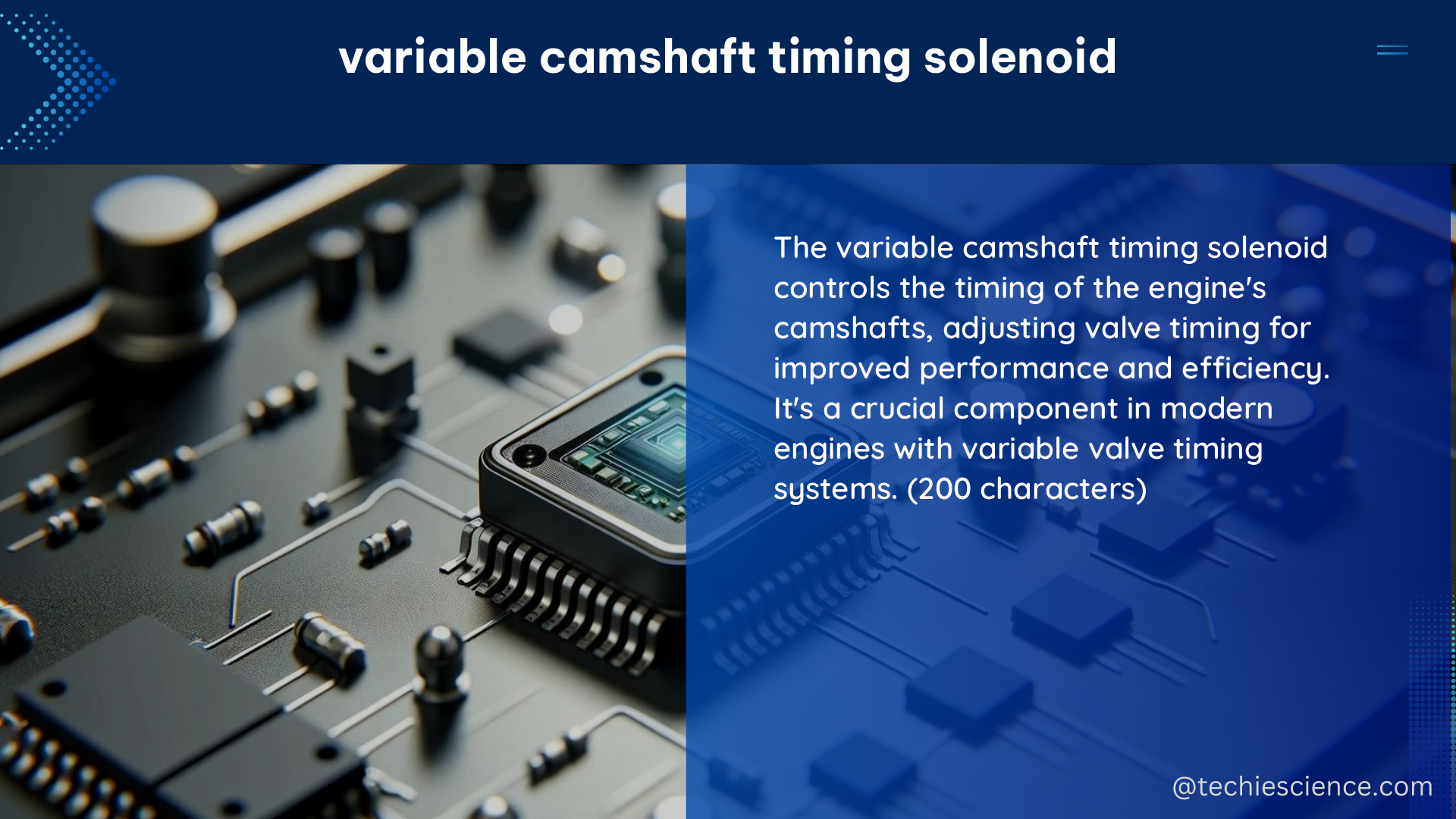The variable camshaft timing (VCT) solenoid, also known as the variable valve timing (VVT) solenoid, is a critical component in modern engines that plays a crucial role in optimizing engine performance, improving fuel efficiency, and reducing exhaust emissions. This comprehensive guide will delve into the technical details, testing procedures, and maintenance requirements of the VCT solenoid, providing you with a thorough understanding of this essential engine component.
Understanding the VCT Solenoid
The VCT solenoid is part of the VCT unit, which is connected to the exhaust camshaft. This unit controls the rotation of the camshaft, allowing for precise adjustment of valve lift and operation. The VCT unit is oil-filled, and the pistons inside the unit move in response to oil pressure, enabling the adjustment of the exhaust camshaft position. This adjustment can range from maximum advance to maximum retardation, providing optimal engine performance across a wide range of speeds and loads.
Technical Specifications of a Typical VCT Solenoid

| Specification | Value |
|---|---|
| Voltage | 12V DC |
| Current | 2-3A |
| Resistance | 10-20 ohms |
| Operating Temperature | -40°C to +125°C |
| Mounting Bolt Size | M10 x 1.25 |
| Oil Pressure Range | 20-80 psi |
| Oil Flow Rate | 1-2 cc/min |
| Operating Life | 100,000 miles or more |
Testing the VCT Solenoid
To ensure the proper functioning of the VCT solenoid, it is essential to perform regular testing. Here are the steps to follow:
-
Locate the VCT Solenoid: The VCT solenoid is typically located near the valve cover on the pulley side of the engine.
-
Check for Power: Use a multimeter to check for voltage at the electrical connections of the VCT solenoid. If there is no voltage, check for shorts and wiring issues.
-
Check the Solenoid Valve: Remove the solenoid and visually inspect it for any signs of damage or contamination. You can also use a multimeter to check the ohms reading of the solenoid.
-
Test the Solenoid Operation: Use the battery of the vehicle to test the solenoid operation. Attach alligator clip test leads to the two electrical connections on the solenoid and observe any changes in the engine speed or sound.
If the VCT solenoid is faulty, it can trigger a check engine light and display various trouble codes, such as P0010, P0011, P0012, P0013, P0014, P0020, P0021, P0022, P0023, P0024, P0025, P0028, or P1349. These codes can be read using a diagnostic scanner or by taking the vehicle to an auto parts store for a free scan.
Maintaining the VCT System
To ensure the longevity and reliability of the VCT system, it is crucial to follow the manufacturer’s recommended maintenance schedule and use high-quality oil and filters. Dirty or low oil can cause the VCT solenoid to fail, leading to poor engine performance and increased emissions.
Conclusion
The VCT solenoid is a vital component in modern engines, responsible for optimizing engine performance, improving fuel efficiency, and reducing exhaust emissions. By understanding the technical details, testing procedures, and maintenance requirements of the VCT solenoid, you can ensure the proper functioning of your engine and maintain its peak performance.
References
- Variable Camshaft Timing | Bob Is The Oil Guy
- Testing a Variable Valve Timing Actuator – Snap-on
- Exhaust and intake VVT solenoid – Trailvoy

The lambdageeks.com Core SME Team is a group of experienced subject matter experts from diverse scientific and technical fields including Physics, Chemistry, Technology,Electronics & Electrical Engineering, Automotive, Mechanical Engineering. Our team collaborates to create high-quality, well-researched articles on a wide range of science and technology topics for the lambdageeks.com website.
All Our Senior SME are having more than 7 Years of experience in the respective fields . They are either Working Industry Professionals or assocaited With different Universities. Refer Our Authors Page to get to know About our Core SMEs.